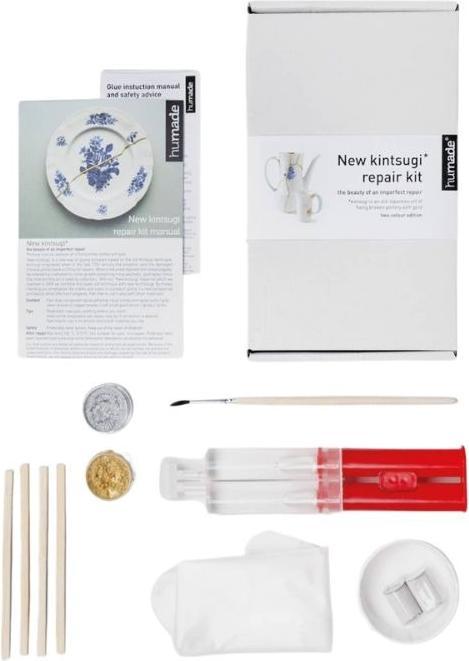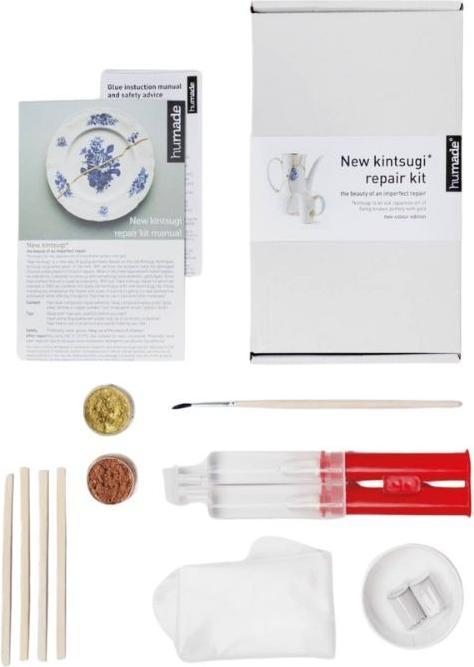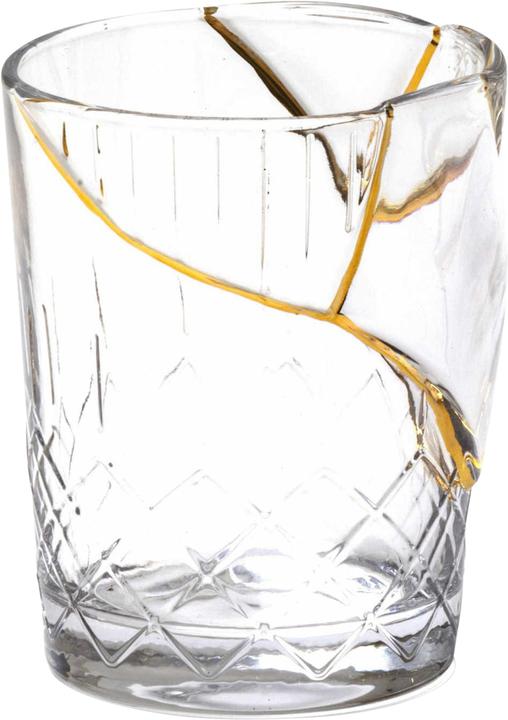
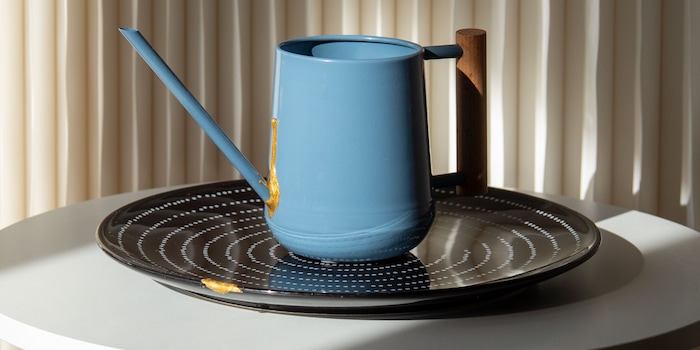
Kintsugi for beginners: How I gilded a transport damage
Kintsugi is a traditional Japanese repair technique for ceramics. Most craft kits have as little to do with the original method as my spill has to do with art. But I still like the result.
A few years ago, my wife gave me a Kintsugi set. Since then, I've been waiting for the right mishap to putty something using the Japanese method. We don't have any expensive ceramics that could accidentally slip out of my fingers.
Galaxus delivers the golden opportunity free of charge when I order a side table and a watering can. An ominous combination, as it turns out when I open the parcel. At least when the jug comes loose from its mount and the little table falls onto the long, thin spout during transport. My dear postman, you have Kenny killed the jug.

In other words: it went wrong. So I take a few photos, report the transport damage and shortly afterwards receive a replacement product and the information that I can dispose of the damaged item.
I'm already on the verge of doing so when I realise, with the jug in my hand, that it might be possible to repair it. My first attempt with normal glue holds, but it looks poor, as the paint around the break on the watering can has flaked off.
Then Kintsugi comes to mind. The method that is actually associated with ceramics. My craft kit is also supposed to glue porcelain, glass, leather, stone, wood and metal - pretty much everything except soft plastics.
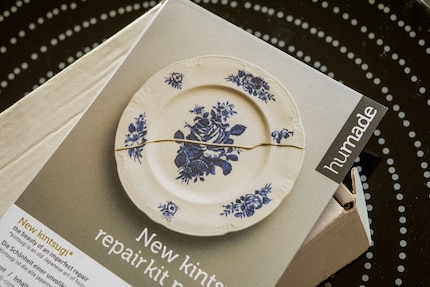
What exactly is Kintsugi?
The natural lacquer Urushi has been used in Asia for thousands of years. It has become synonymous with traditional Japanese arts and crafts. The raw material is obtained from the resin of the East Asian lacquer tree and processed or coloured in its natural state.
Mixed with gold or silver dust, it emphasises the cracks in kintsugi and fills in broken areas so that the repaired piece looks better and more unique than before. The scars are not hidden, but gilded. In keeping with the philosophy of Wabi-Sabi, which emphasises the aesthetics of imperfection.

The traditional method does not involve chemicals, but high-quality natural products that are skilfully mixed and sometimes processed with real gold powder. I don't expect any of that from my little craft kit. For around 30 francs, I just want it to last, shine and not poison me in the end.
Bonding craft kits with epoxy resin
In this price range, the craft kits contain two-component adhesive based on epoxy resin and a hardener. When the two components are mixed, a chemical reaction starts. In the end, the plastic is waterproof, heat-resistant and no longer elastic.
Gold dust, which is not swept together on Zurich's Paradeplatz, but is the same as that used in the cosmetics industry for make-up products, provides the lustre. It is also available in other colours such as silver or bronze. Add a pair of plastic gloves, a brush and several wooden spatulas - and your Kintsugi set is ready. If you want to repair cracked areas, make sure that it also contains putty for filling and modelling. The putty is included here, the sets differ in colour.
Some people categorically reject this «unnatural» Kintsugi method, for example the set from Mora is penalised with two stars and the comment «Epoxy-Shit». Let's agree on this: it's not pure doctrine. And you should handle resin and hardener with care in their liquid state. They can irritate the eyes, skin and respiratory tract, cause allergies and contaminate water. Unmixed components should be disposed of as hazardous waste. Once cured, epoxy resin no longer releases any harmful substances.
The manufacturers usually refer to this when asking whether repaired crockery can be used without hesitation. I wrote to Humade and have not yet received a response, but I did find this in the brand's FAQ on Instagram. If you leave your repaired item to dry for at least 48 hours and don't heat it above 100 degrees, you won't have a problem.
How the repair works
In addition to my broken watering can, I also find some plates with cracked areas that I also want to repair. As is the case when I'm working on a topic, I suddenly see possibilities everywhere. A small warning at this point: my artistic standards are low. First and foremost, I want it to last, but I'm happy to accept it if it looks better than before.
1. mixing the glue
My craft kit from Humade contains the two-component glue in a double syringe. So there's little I can do wrong when mixing
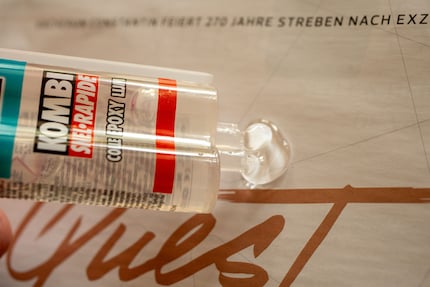
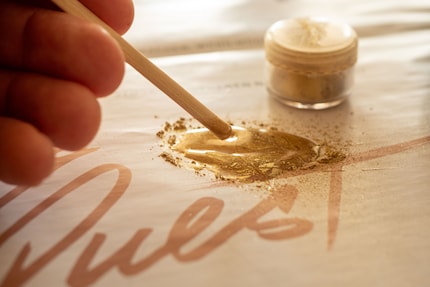
2. apply the mass
I use the wooden spatula to spread the liquid gold generously over the damaged areas. While the compound hardens, I can continue modelling it. A big word for the fact that I poke around in it with the wooden stick. I then turn the pot over so that a golden drop can form while it dries.
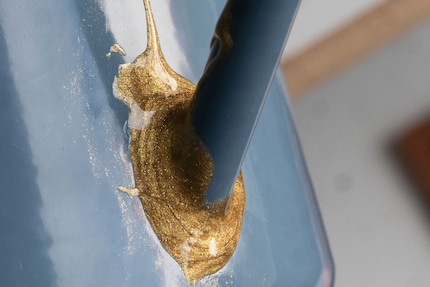
3. repair imperfections
My modelling glue is no longer completely fresh, but it still works. The shelf life is stated as at least 24 months, which is more than enough for me. I use it to repair the many imperfections on the old plates
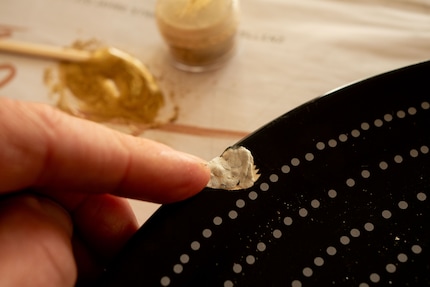
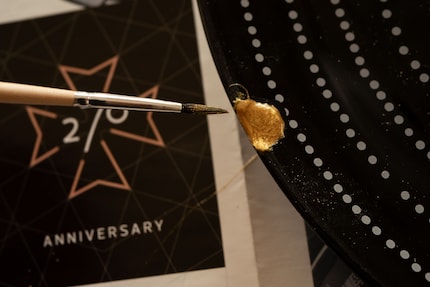
The result is something to be proud of
Of course, I'm biased to the max when I look at the fruits of my labour. However, after ten minutes of spotting, the magic of Kintsugi becomes completely clear to me. Instead of blemishes and damage, I can now see my shiny work, which - at least from a distance - doesn't look so amateurish. The plates now have golden accents instead of open wounds. And when I place Kenny, the Kintsugi jug, next to the flawless replacement product, I'm also completely satisfied.
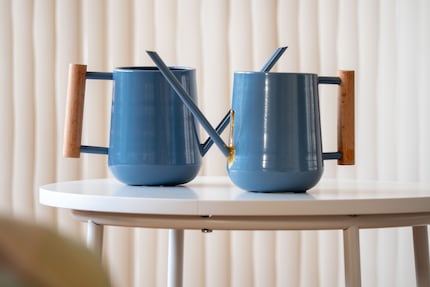
I just need to work on the name. Perhaps I should call the model «Golden Tear» and place it in an exhibition with a few pompous sentences about grief, melancholy and hope, which manifest themselves in the tear rolling upwards. If I then win a prize, I will say: Thank you to my wife! It wouldn't have been possible without her. Two left hands, on the other hand, were no obstacle.
Simple writer and dad of two who likes to be on the move, wading through everyday family life. Juggling several balls, I'll occasionally drop one. It could be a ball, or a remark. Or both.
Practical solutions for everyday problems with technology, household hacks and much more.
Show all
